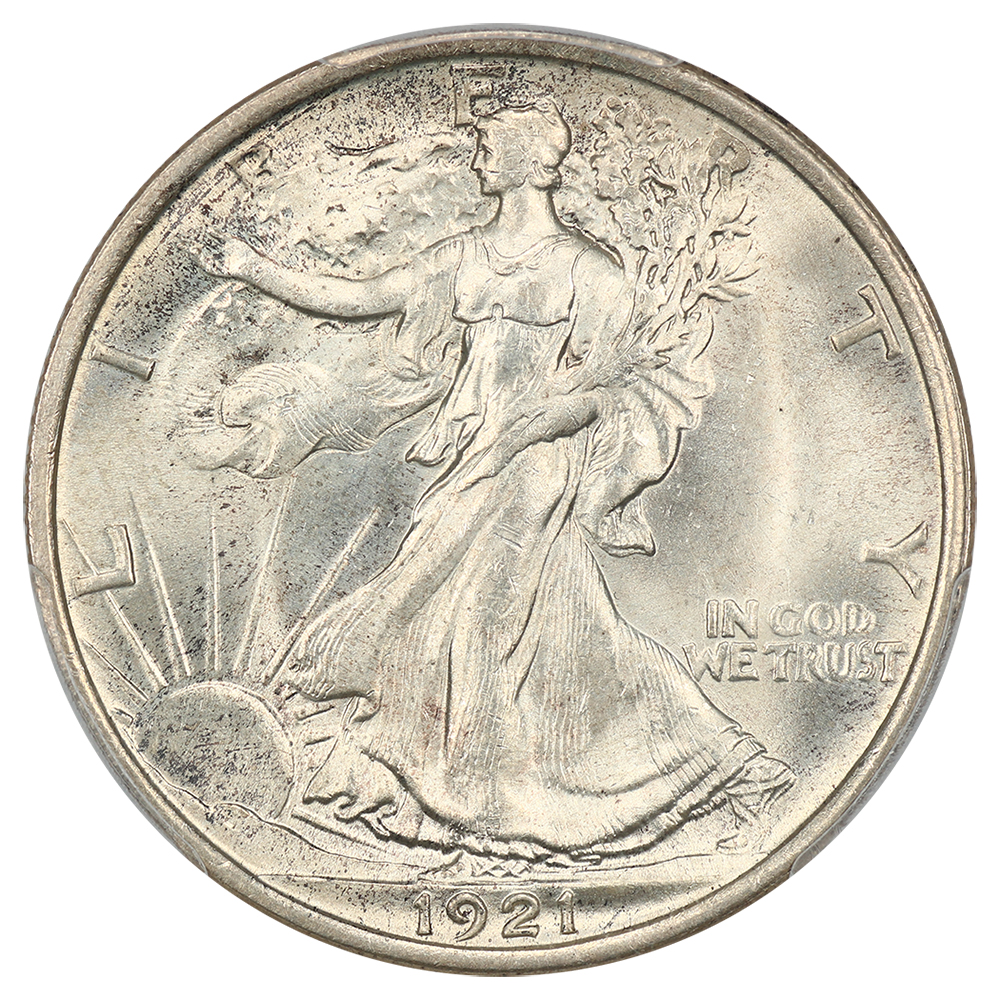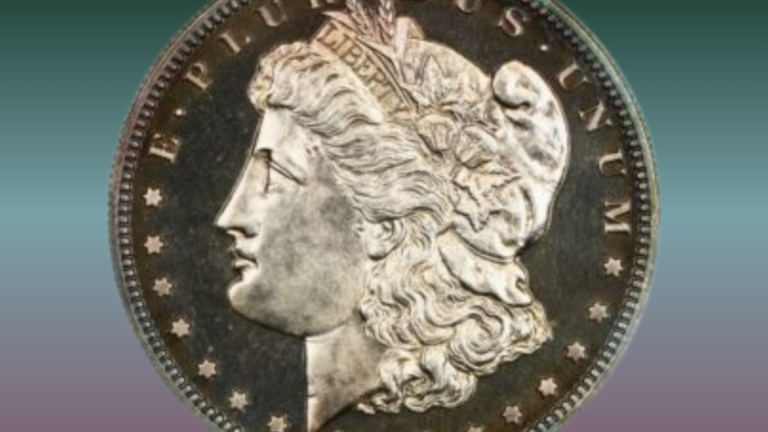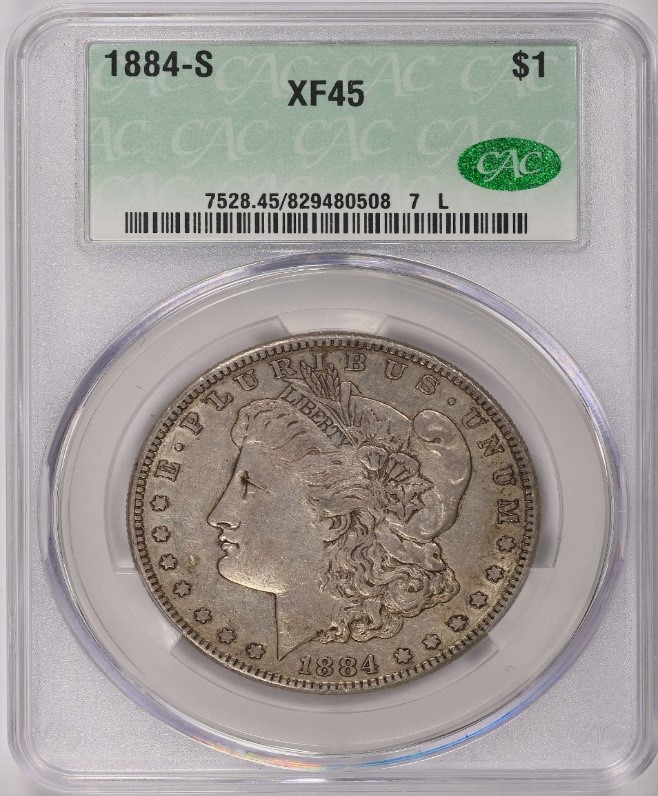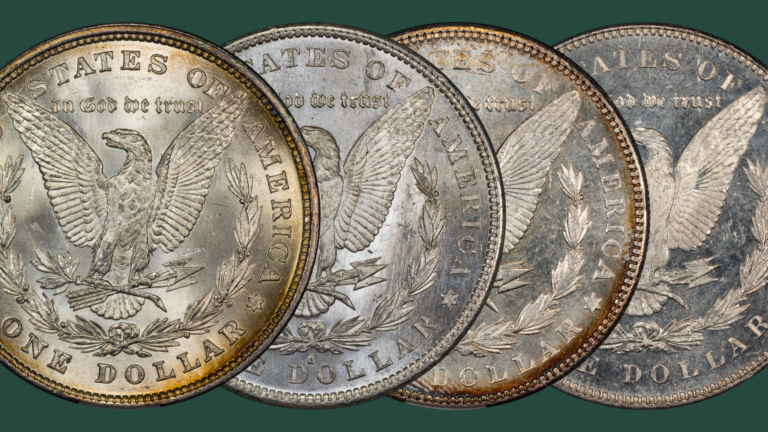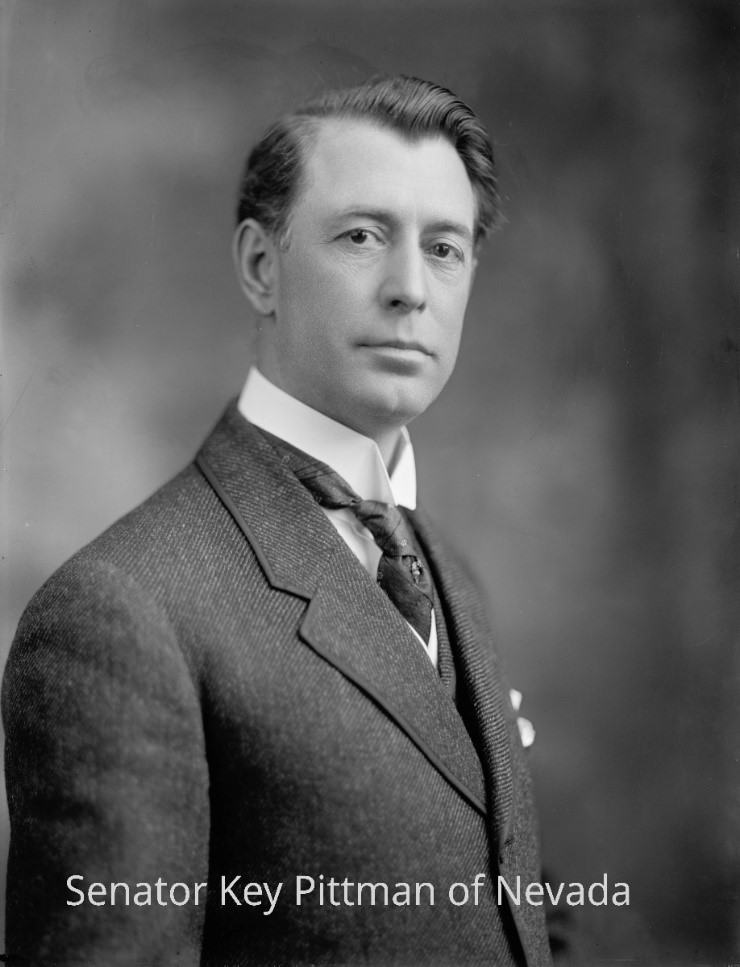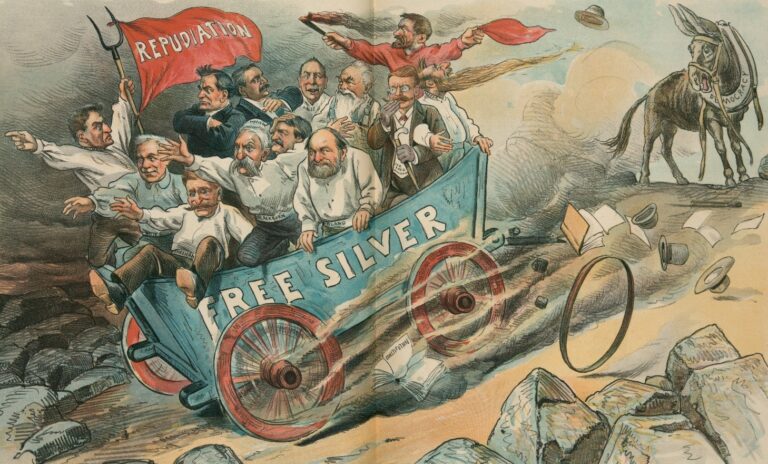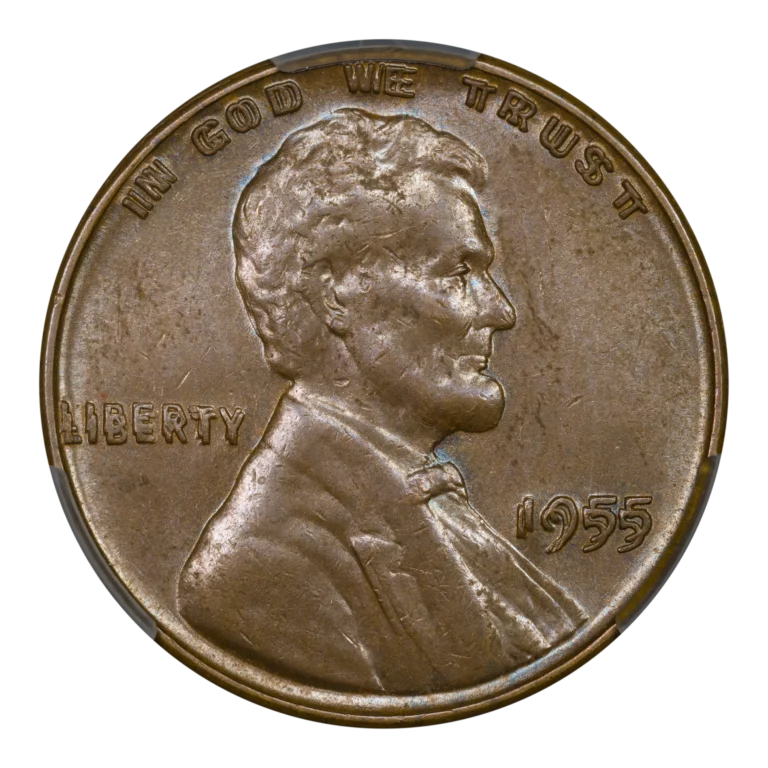by Greg Reynolds
This discussion is about assembling a set of Gem Uncirculated Walking Liberty half dollars (1916-47) ‘by date.’ By tradition, gems are coins that grade MS-65 and higher. Certified MS-67 grade Walkers often cost multiples of the values of certified MS-65 or even MS-66 grade coins of the same dates. In my view, those that are certified as grading MS-65 or MS-66 are often better values for collectors than Walking Liberty half dollars of the same respective dates that are certified as grading MS-67 or MS-68.
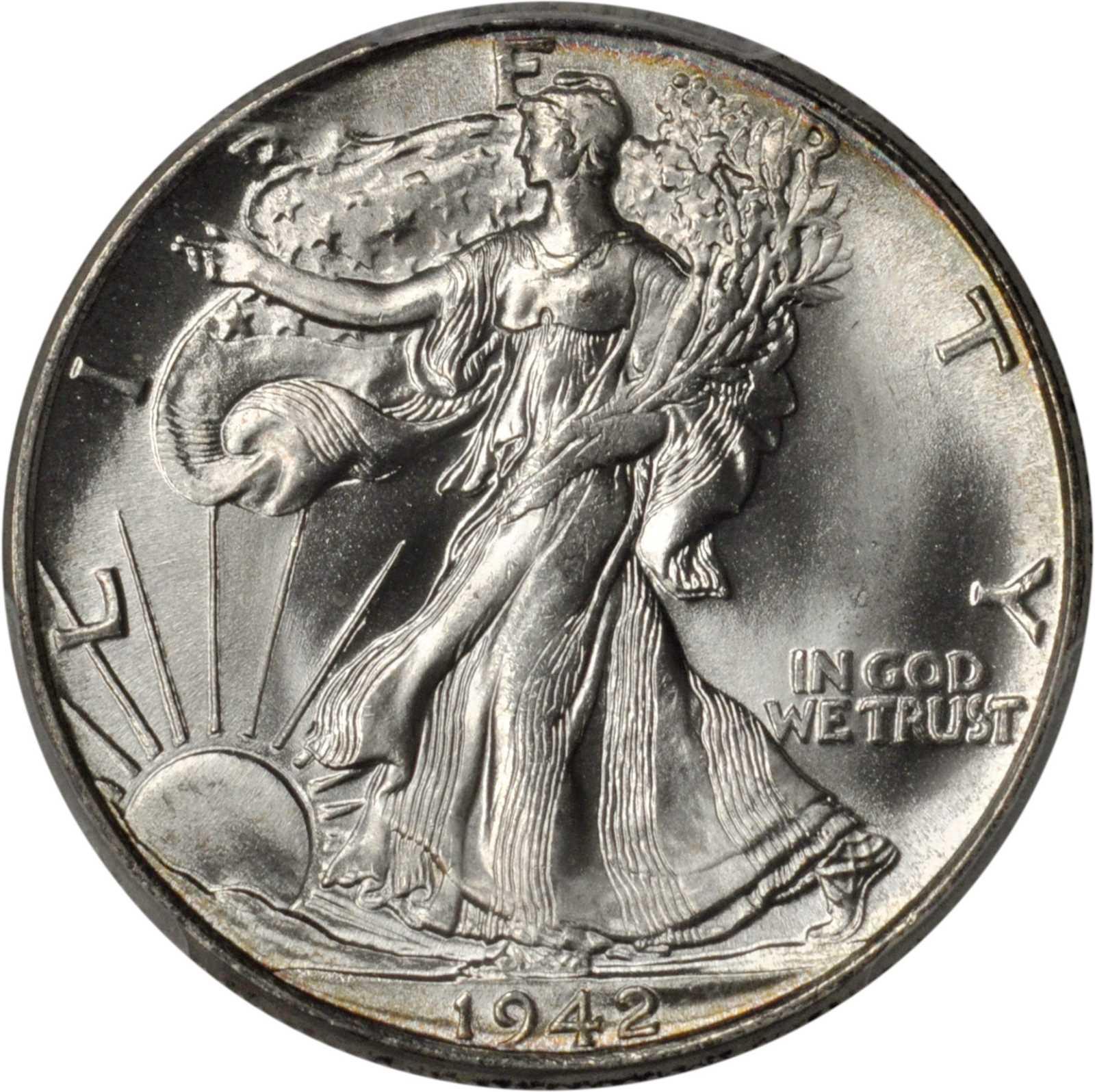
The 1942 Walking Liberty Half Dollar
The 1942 Walker is an interesting example regarding relative prices in gem grades. As of March 4, 2022, the following CPG-CAC medium retail price estimates are listed on the CAC and Greysheet websites: MS-65 $124, MS-66 $203, MS-67 $780 and MS-68 $31,200. Certainly, a CAC approved MS-67 grade 1942 Walker will tend to be more attractive and/or have fewer contact marks than a CAC approved MS-66 grade 1942. Even so, should a MS-67 grade 1942 really be worth more than three times as much as a MS-66 grade 1942 Walker?
There are 243 1942 Walkers that have been approved by CAC at the MS-67 level, hardly a condition rarity. Among the 264 1942 Walkers that have been CAC approved in the MS-65 range, there must be a significant number that feature really attractive natural toning. Would it make more sense to buy one of those for less than $150 than to pay more than $700 for a MS-67 grade 1942?
As for the three 1942 Walkers that have been CAC approved as MS-68, the CPG-CAC retail price estimate of $31,200 is astonishing! Regardless of how many or how few contact marks a particular 1942 Walker has suffered over the years, 1942 Walkers are common coins. More than forty-seven million were minted, and at least five hundred thousand survive.
Do more than ten thousand people collect Walkers ‘by date’? I doubt it. For a type set, there are plenty of other common dates that would be suitable, not just the 1942, and millions of Walkers in total survive.
On Aug. 17, 2021, Stack’s Bowers auctioned a PCGS graded MS-68 1942 Walker, without a CAC sticker, for $25,200. To me, this coin appeared to be another dipped Walker with a few contact marks on the obverse (front of the coin). CAC approved MS-65 or MS-66 grade 1942 Walkers are much better values, in my opinion. Besides, does it make sense to pay five figure prices for ‘Late Date’ Walkers?
Purchasing and Collecting a “Late Date” Walking Liberty Coin
Generally Walkers minted from 1941 to 1947 are termed ‘Late Dates.’ These are super-common. It is easy to buy CAC approved MS-65 or MS-66 grade ‘Late Date’ Walkers. Most of these are bright white, often, though not always, as a consequence of dipping. From my perspective, it would be more enjoyable to search for MS-65 to -66 grade ‘Late Date’ Walkers that feature much natural toning, or at least some russet and blue tints.
On Dec. 12, 2021, David Lawrence Rare Coins sold a likely dipped-white, CAC approved, NGC graded MS-65 1941 Walker for $171.50. On June 9, 2021, Stack’s Bowers auctioned a CAC approved, NGC graded MS-65 1945 Walker for $228. That 1945 featured multiple shades of russet along with green and blue tints. On the upper obverse, multiple colors crisply blend together.
On Jan. 30, 2022, the firm called GreatCollections sold a PCGS graded MS-66+ 1945-D Walker, with a CAC sticker, for $321.24. Published images seem to suggest that this coin has pale russet and/or tan tones plus mild blue tints, with much luster. If so, it is notably distinct from the somewhat typical dipped-white appearance of many gem ‘Late Date’ Walkers.
On April 14, 2021, Stack’s Bowers auctioned an NGC graded MS-66+ 1947 Walker, with a CAC sticker, for $180. Experts at CAC ignore the plus aspects of plus grades assigned by NGC or PCGS. Even so, this could very well be an especially appealing coin. Apparently, it has much mellow russet toning, probably with blue tinted areas, and considerable underlying original mint luster.
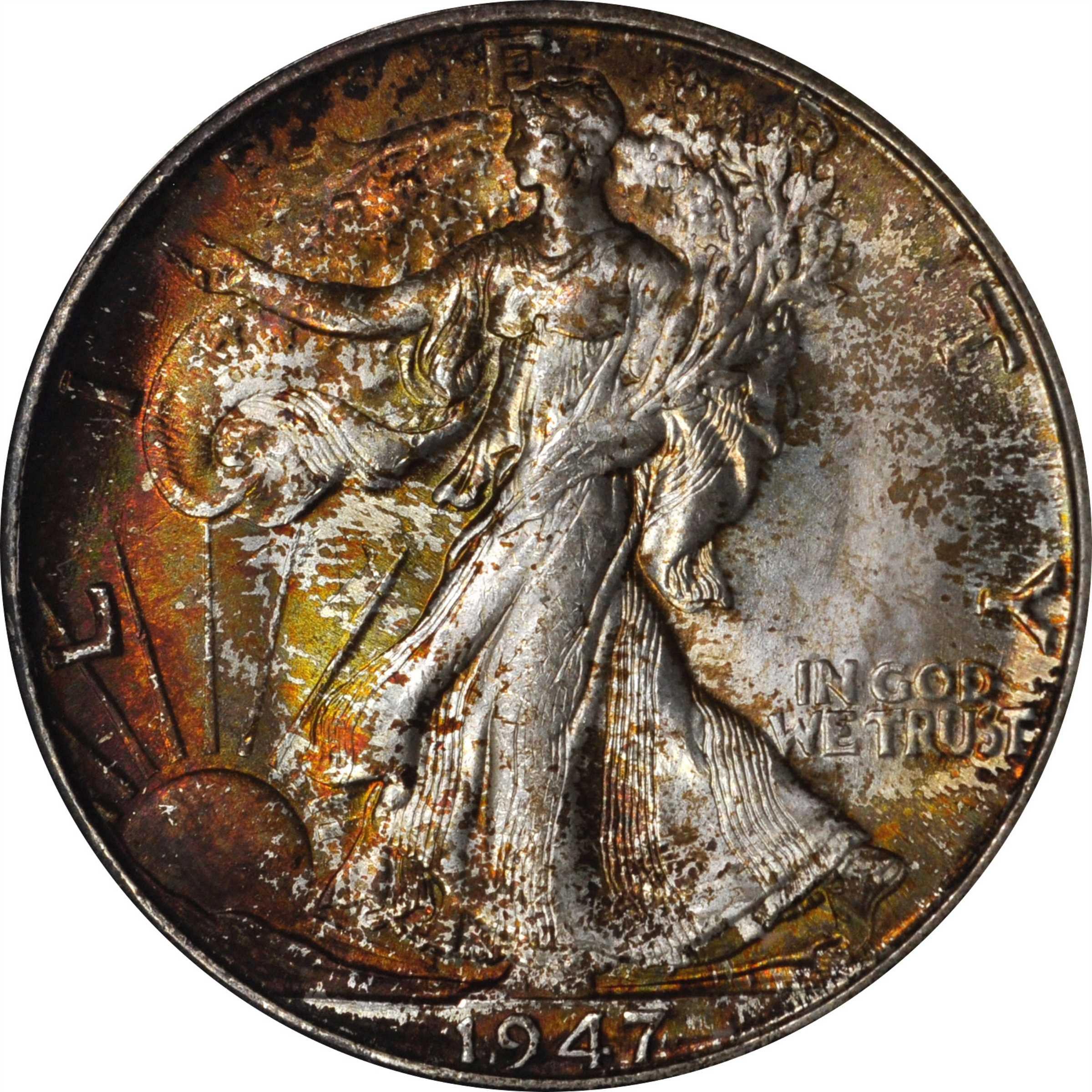
On Dec. 14, 2021, Stack’s Bowers auctioned a CAC approved, NGC graded MS-65 1947-D Walker for $336. This 1947-D has multiple shades or russet, orange-russet and green hues.
The ‘Late Dates’ (1941-47) are common, inexpensive and easy to acquire. Buyers who have not collected Walkers before may wish to begin with them.
Walkers from the 1930s tend to be more expensive, though most of them are not really hard to find in gem grades. Although the 1938-D is relatively scarce in all grades below MS-65, it is not relatively rare in gem grades. The 1933-S, 1934-D, 1935 and 1935-S are all estimated to be costlier than the 1938-D in gem grades. Actual prices paid, of course, will vary depending upon the characteristics of the individual coins and the circumstances of particular transactions.
On June 15, 2021, Stack’s-Bowers auctioned a CAC approved, PCGS graded MS-65 1935-S Walker for $1920, with light toning. On Jan. 23, 2022, GreatCollections sold a CAC approved, PCGS graded MS-66 1935 for $631.11. Small areas of vivid light to medium blue tones, like those on this coin, are found fairly often on Walkers. These hues are different from those hues that are often attributed to Wayte Raymond ‘National’ albums and boards. These may stem from some other kind of coin album that was popular during the 1950s and 1960s.
On Oct. 12, 2021, Heritage auctioned an NGC graded MS-65 1934-D, with a CAC sticker, for $810. Most likely, this coin has much, very mild russet toning, with moderately brilliant fields, which may have pale blue tints here and there.

The Minting of Walking Liberty Half Dollars in the 20s and 30s
The 1933-S and 1929-S Walkers are much better dates. They are relatively much scarcer than several others from the same time period in ‘mint state’ grades. Curiously, the 1933-S is the only date from 1930 to 1933. Walker production was oddly inconsistent and sporadic during the 1920s.
Walkers were struck at all three mints, Philadelphia, Denver and San Francisco, in 1920 and 1921. There are no Walkers dated 1922. Strangely, in 1923, Walkers were only struck in San Francisco. Even stranger, there were no Walkers produced in 1924, 1925 and 1926. During 1927 and 1928, they were again only minted in San Francisco. During much of the history of the U.S., half dollars were a very popular denomination. The reasons for production totals during the 1920s are mysterious.
In response to my inquiries, R. W. ‘Bob’ Julian emphasizes that most of the more than forty million Walking Liberty half dollars struck from 1916 to 1918 “were still in daily use” during the 1920s and early 1930s. Julian is the leading historian of the history of U.S. coinage. “The mints struck only what was requested by the Federal Reserve System and there was just no demand east of the Rockies for half dollars for several years in the 1920s,” Julian adds.
Regarding survivors from the 1920s, gem quality Walkers struck in San Francisco and Denver are available to collectors in the 2020s. Some are much less expensive than others.
On April 25, 2021, GreatCollections sold a CAC approved, NGC graded MS-65 1929-D for $1628. This coin was earlier in the epic collection formed by Eric Newman. Coins from Newman’s collection were provided with distinctive labels by NGC. On Nov. 16, 2013, in one of the auction sessions of the Eric Newman collection, Heritage auctioned this same coin in its same holder for $2585!
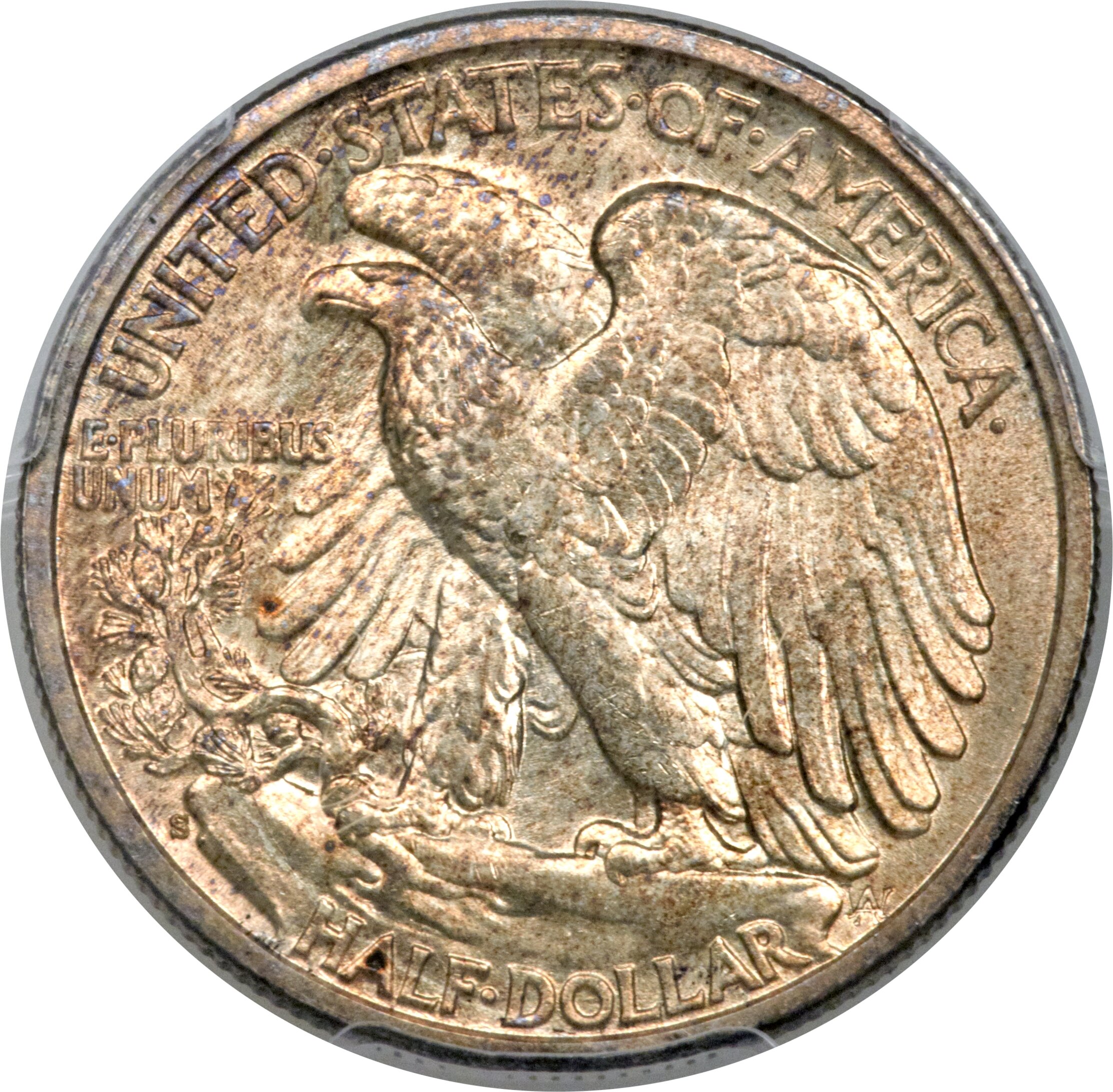
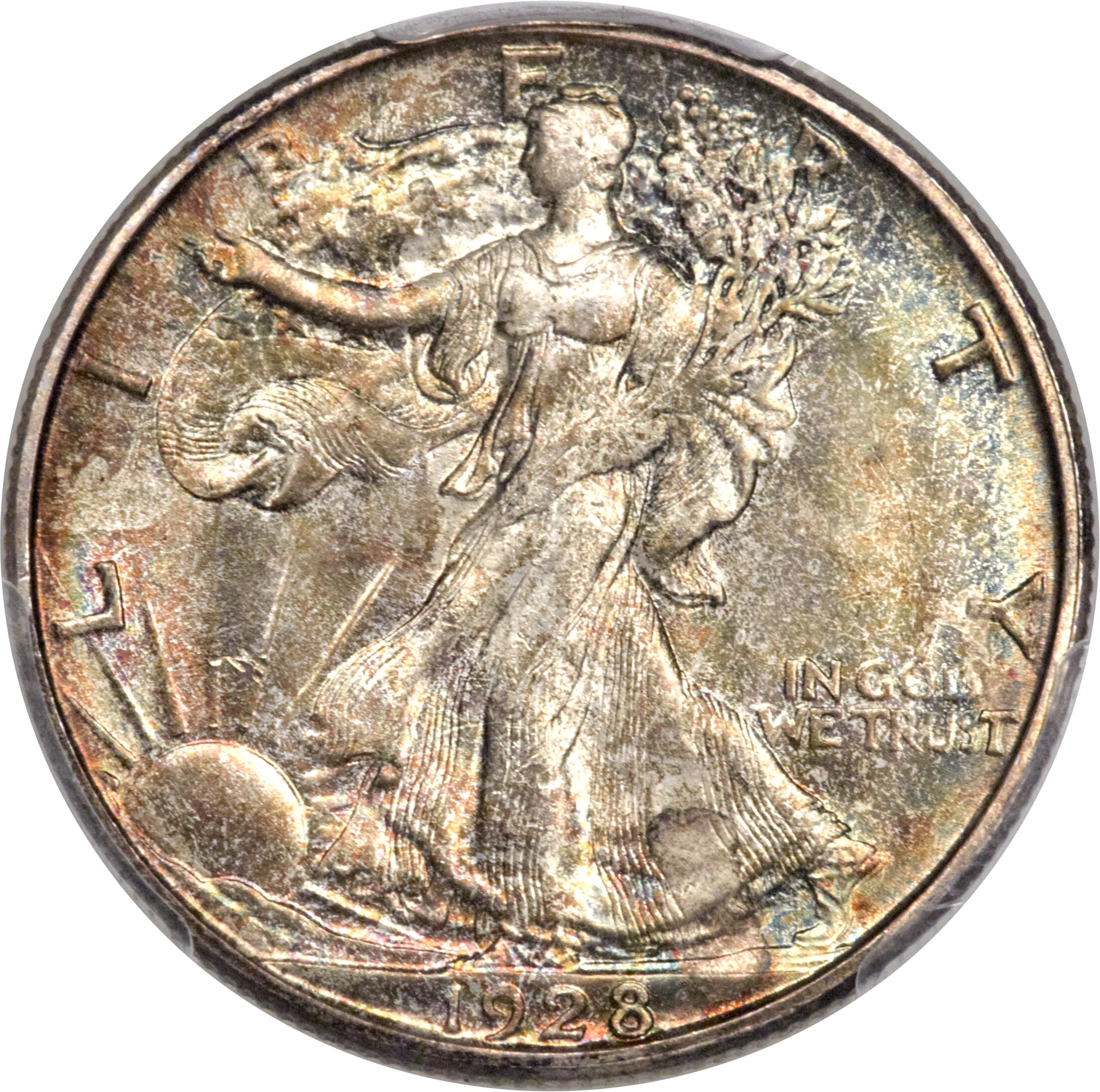
Though not one of the scarcest dates in the series, the 1928-S is a condition rarity in gem grades. A collector who finds a fairly graded 1928-S being offered for a reasonable price should probably seize the opportunity to acquire it.
CAC Premiums and Public Sales of “Late Date” Walkers
Gem 1928-S halves often come with blue, russet and apricot tones blended together. Although it is impossible to gauge the true colors and texture of a coin by inspecting images, the following two CAC approved MS-65 grade coins may feature tones that are typical of those found on gem quality 1928-S Walkers. On Nov. 14, 2021, GreatCollections sold one for $9626.10. On Sept. 17, 2015, Heritage sold a different CAC approved, PCGS graded MS-65 1928-S for $8812.50.
The keys of 1921 deflect attention from the 1923-S, which is surprisingly rare in gem grades. CAC has approved just ten as MS-65, four as MS-66 and two as MS-67. On Nov. 14, 2021, GreatCollections sold a CAC approved MS-65 grade 1923-S for $29,701.10.
The 1921, 1921-D and 1921-S are the keys overall. In the Choice to Gem grade range, the 1919-D is a key, too, and the 1921 Philadelphia Mint date is not that rare. The 1921-S is especially elusive in the gem grade range.
I am aware of only two public sales of CAC approved, MS-65 grade 1921-S Walkers over the last two years, both by GreatCollections. One realized $162,251.10 on Nov. 14, 2021, and the other brought $124,410 one year earlier, on Nov. 15, 2020.
Curiously, as of March 4, 2022, the CAC population in MS-65 for the 1921-D is the same as the CAC population in MS-65 for the 1921, fourteen, and the CAC population in MS-66 is the same, too, just one! The 1921, however, is worth around half as much as the 1921-D in gem grades. On June 13, 2021, David Lawrence Rare Coins sold a CAC approved, PCGS graded MS-65 1921 for $23,350.

Show off Your Collection in the CAC Registry!
Have CAC coins of your own? If so, check out the CAC Registry–the free online platform to track your coin inventory, showcase your coins by building public sets, and compete with like-minded collectors!
The 1919 Walking Liberty Half Dollar
CAC has approved just one 1919-D as MS-65. It was formerly in the collection of Dr. Steven Duckor, a legend in our own time. According to PCGS, the Duckor 1919-D is now in the collection of D. L. Hansen. It may not be available again for a long time, if ever. On Jan. 4, 2018, the Duckor-Hansen 1919-D was auctioned by Heritage for $240,000.
PCGS reports ten others as MS-65 and one as MS-66. The NGC census lists four as MS-65. A 1919-D should be one of the last coins acquired by a collector who is assembling a gem set of Walkers. It is imperative that an expert be consulted, preferably one who is not pushing a 1919-D to which he happens to have access. The positive and negative aspects of various 1919-D Walkers should be discussed in detail.
In the past, CAC approved a 1919-D in MS-66, presumably the sole 1919-D that is PCGS graded MS-66. A working hypothesis is that its serial number changed when some or all of Gerald Forsythe’s set was resubmitted to PCGS for regrading or just for new holders. If so, the new serial number would thus not be in CAC’s database unless and until Forsythe’s 1919-D is resubmitted to CAC.
The 1919 Philadelphia Mint issue is not as much of a condition rarity as market levels suggest that it might be. These are not great values. There is a good chance that a collector could acquire a CAC approved MS-65 1919 Walker for less than $8000. As for the certified MS-66 1919 Walkers, I suggest inspecting them carefully and consulting an expert.
On April 22, 2021, Heritage auctioned a CAC approved MS-65 1919 for $7800. On Aug. 14, 2019, Heritage auctioned a different CAC approved MS-65 1919 for this same price, $7800. That coin, however, was upgraded by PCGS to “65+” and then auctioned by Heritage in November 2021 for $11,400. Collectors may sometimes benefit by researching a coin, or paying someone else to do so. If a coin has been upgraded, it is often a good idea to reflect upon whether the upgrade was really merited and whether the previous grade should be taken into consideration when placing a value on an upgraded coin.
The First Issues of Walking Liberty Half Dollars, 1916 and 1917
While collectors are in the process of becoming familiar with gem quality Walkers, it may be a good idea to focus on pre-1919 Walkers before thinking about the key dates. Because 1916 was the first year of issue, many 1916 and 1916-D Walkers were saved, and it is easy to find attractive gems. A CAC approved MS-65 or higher grade 1916-S, may be acquired for a reasonable price without much difficulty, though it may be necessary to wait a year or two.

The mintmark is on the obverse of the 1916-D and the 1916-S. In the middle of 1917, U.S. Mint officials decided to move the mintmark from the obverse of the design to the reverse (back), so 1917-D-Obverse, 1917-D-Reverse, 1917-S-Obverse and 1917-S-Reverse Walkers are collected as if they are four different dates, all of which are needed for a set ‘by date.’ It is important to not be in a hurry and to not announce demands for these. I suggest pursuing them in a relatively quiet manner.
Although the population reports provide the impression that there are plenty of gem grade 1917-D ‘mintmark on obverse’ Walkers in existence, it may take more than a year to find a true gem for a reasonable price. I suggest consulting an expert and being patient.
The 1917-D-Reverse Walker is a different matter. PCGS and NGC have certified eighty-five in the gem range, but these are not all different coins. Moreover, in my personal opinion, many of the 1917-D-Reverse Walkers that are certified as gems are not true gems. It is noteworthy that CAC has approved just nine in the MS-65 range and none higher.
As of March 4, 2022, the CPG-CAC retail price estimate for a MS-65 1917-D-Reverse Walker is $15,600. My research indicates that this estimate is low. A collector should plan on budgeting at least $20,000 for a true gem.
It would be a challenge to assemble a set of gem Walking Liberty half dollars. This quest can be made much easier if two or three coins are collected in MS-64 grade rather than in the gem grade range. Personally, I would rather have a MS-64 grade Walker with neat, natural blue and russet toning than a MS-65 grade representative of the same date that has been dipped-white.
Fortunately, among pre-1933 Walkers, many never dipped or naturally retoned coins survive. For a long time, there have been dozens of sophisticated collectors of these who properly stored them. A connoisseur who has enough time and money may greatly enjoy assembling a set of gem quality, relatively original Walkers.
Images are copyrighted by Heritage Auctions (www.ha.com), Stack’s Bowers Galleries (www.stacksbowers.com), and DLRC (www.davidlawrence.com).
Copyright © 2022 Greg Reynolds
About the Author
Greg is a professional numismatist and researcher, having written more than 775 articles published in ten different publications relating to coins, patterns, and medals. He has won awards for analyses, interpretation of rarity, historical research, and critiques. In 2002 and again in 2023, Reynolds was the sole winner of the Numismatic Literary Guild (NLG) award for “Best All-Around Portfolio”.
Greg has carefully examined thousands of truly rare and conditionally rare classic U.S. coins, including a majority of the most famous rarities. He is also an expert in British coins. He is available for private consultations.
Email: Insightful10@gmail.com
